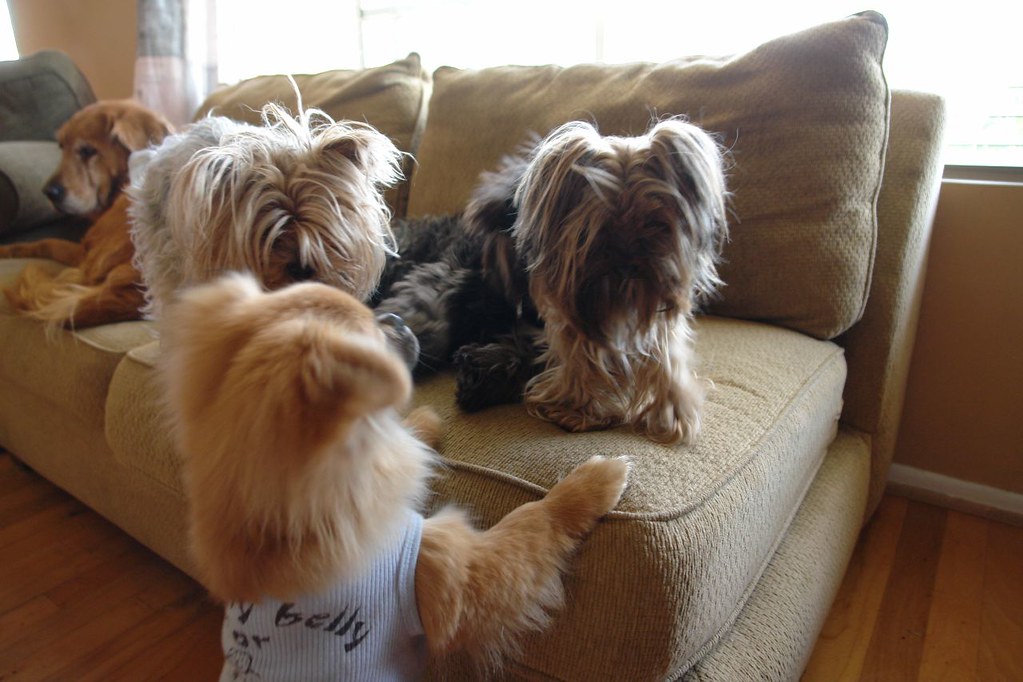Regardless of whether or not you have one dog and want to add another, or have 2,3 4 etc. and want to add to your pack, it is important to choose the right dog to add. Here are some tips to ensure that you adopt a dog that is not only the right fit for you, but one that is also right for your existing pack members. One of the most pressing goals here is first to make the right choice so that the integration is a smooth and problem free. What follows are rules and recommendations that I learned when I went to college for animal behavior and canine training.
- Look for a dog that is in the same “group” as your dog, not necessarily the same breed but the same general group. In other word if you have a sporting dog look for another dog from that general group. Dogs from the same group share common drives and traits so they are set up to get along better.
- If you only have one dog and want to add a second, look for a dog who is the opposite gender. For example if you have a male, look for a female. Opposite sexed dogs tend to get along better and integrate/assimilate more easily. If you have more than one dog and wish to add to your pack, I will share later in this article how best to do that.
- It is very important to take into consideration your existing dog’s age and size. I never place a toy breed with a large breed dog only because, no matter how well they appear to get along because even in normal dog play the small dog can get stepped on or injured unintentionally by the larger dos. I have seen this happen many times. A family – not clients of mine- had 2 toy breed dogs and adopted a German Shepherd. The dogs seemed to get along very well but one day, while out in the yard, the GSD was playing as dogs do (roughly) with the toy and snapped its neck. The small dog died immediately and the GSD kept nudging it to get up and play some more. Just tragic.
- Also look for a dog that is similar in age. It does not have to be a dog that's exactly the same age but should be in the same age range. For example if you have a calm senior dog do not try to add a hyper active young, adolescent dog to your family as that would be way too stressful for your senior dog.
I had a woman who wanted to adopt a puppy I had rescued. When I went to meet her I saw she had a very elderly lab. The puppy was about 5-6 months old and very frenetic. I told her that this would not be a good match. She balked so I told her I would allow her senior to meet the puppy and told her to look for visible signs of stress in the senior. I wanted her to see immediately that he elderly dog could not tolerate a youngster. Within 2 minutes of meeting, her senior was salivating profusely, yawning, and displaying many other signs of stress. I picked the puppy up when it was jumping in the face of the senior dog, and turned to her and asked if she now saw what I meant. She balked again and I told her that in good conscience I could not adopt that puppy out to her because it would not be fair to her existing dog. She was not happy and maybe looked elsewhere but I was firm in my stance that I would not ever want to stress out her senior. Maybe another rescuer would do that but I would not. I couldn’t live with myself if I was the person who knowingly put that senior in a position of being so stressed.
These are some of the guidelines that should be followed when looking for a second dog to add to your family. The more guidelines a person chooses to ignore, the more likely they will have problems peacefully integrating the new dog and the existing dog.
Look for my next article on how to have a pack of 3 or more. In addition to the guidelines above there are other things one must take into consideration when wanting to have a large pack. Once you chose to go beyond 2 it is even more important to follow additional guidelines not mentions here.




